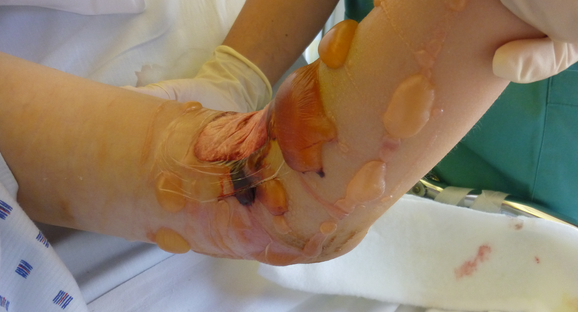Studies reveal, the sooner a person gets a prosthesis done, the better is it for the amputee. The most difficult situation arises when the amputee starts facing edema, commonly known as swelling of the stump that results in the accumulation of the fluid in the area. However, it becomes difficult to fix the prosthesis if the amputee is facing Edema. There are several measures that can be taken to minimize the effects of Edema. The rigid dressing is one way to control Edema. Once the rigid dressing is removed, and the amputee is not putting his prosthesis, elastic bandages help in keeping Edema away from developing. The amputee is taught to do the bandaging on his own so that he does not have to depend on any other person for the same.

An average adult needs three to four elastic bandages that are around six inches wide. The bandage needs to be stretched to the two-thirds of its elastic limit with the maximum tension around the end of the stump. It is important to keep the stump covered with the bandage but at the same time, the bandage should be replaced in every five to six hours.
The stump should never be kept with the same bandage for more than twelve hours. If throbbing occurs, make sure you remove and rewrap the bandage. The more you keep the stump area without a bandage, more are the chances of developing of the stump. This is one of the most important reasons why the stump should be kept covered with a bandage all the time.’
Below are the steps that will help you in wrapping the bandage around your stump.
Step #1:
Take a 6 inches rolled bandage and start by wrapping it around the upper part of the thigh area. Wrap it around the stump area and bring it to the rear portion.
Step #2
Bring the bandage roll through the legs and over the end of the front portion of the thigh.
Step #3
After having wrapped it in the front area, roll the bandage across the back and the lower abdomen areas. This helps in giving a tight grip to the bandage.
Step #4
Stick with the process and wrap it around the thigh, over the back and the lower stomach areas till the roll gets suspended. Once the roll gets completely wrapped, tuck it with the metal clips that come along the bandage.
Step #5
The second roll of the bandage should be wrapped from the outer areas of the upper portion diagonally toward the inner lower surface.
Step #6
Now, bring the bandage roll around the back of the stump and then bring it diagonally upward.
Continue the same procedure to overlAP the bandage over the stump till it gets completely covered.
Step #7
Fasten the second roll of the bandage with the first one.